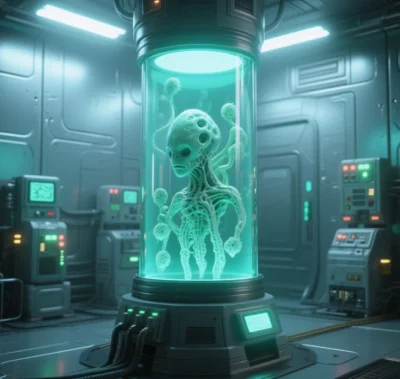
Can Synthetic Biology (SynBio) Create New Species?
Synthetic Biology (SynBio), a revolutionary interdisciplinary field, aims to engineer biological systems to design or construct entirely new species not found in nature. Rapid advancements have shifted this field from theory to practice, revealing both transformative potential and significant challenges. Below, we analyze the technical pathways, real-world examples, and ethical debates surrounding SynBio’s capacity to create novel life forms.
1. Technical Pathways: How SynBio Creates New Species
Bottom-Up Assembly
The most disruptive approach involves assembling minimal life units from non-living components:
- Synthetic Cells (SynCells): Scientists have constructed prokaryotic synthetic cells using lipid vesicles encapsulating transcription-translation systems to perform basic metabolic tasks (e.g., luciferase expression).
- Full Synthetic Genomes: In 2010, J. Craig Venter’s team chemically synthesized the Mycoplasma mycoides genome and transplanted it into a recipient cell, creating the first self-replicating “synthetic organism,” JCVI-syn1.0. This milestone demonstrated the feasibility of de novo life construction.
Radical Redesign of Existing Species
Using standardized genetic parts (e.g., BioBricks) and gene-editing tools (e.g., CRISPR), SynBio engineers organisms with capabilities beyond natural evolution:
- Logic-Gated CAR-T Cells: AND/NOT gene circuits enable T cells to activate only in specific tumor microenvironments, behaving unlike any natural immune cell.
- Synthetic Microbial Factories: Engineered cyanobacteria produce ethylene via photosynthesis, with metabolic pathways and outputs entirely designed by humans.
Hybrid Life-Nonlife Systems
SynBio blurs the boundaries between living and non-living systems:
- DNA Data Storage: Microsoft’s prototype system uses synthetic DNA’s high-density storage capacity (capable of storing 215 petabytes of data per gram), creating “informatic life” undefined by traditional biology.
- Bio-Silicon Hybrid Computers: CRISPR-dCas9-regulated gene expression performs 16-bit addition, representing a new class of “semi-living” computational units.
2. Real-World Applications: Engineered “New Species”
Microbial SynBio (MicroSynBio)
- Environmental Remediation Strains: Engineered phages detect and sequester heavy metals (e.g., arsenic) via integrated metal-sensing genes and detoxification proteins, functionally distinct from natural phages.
- SYNB1618: Synlogic’s engineered bacteria degrade phenylalanine in the gut to treat phenylketonuria (Phase III trials). Their redesigned metabolic networks prevent survival in natural ecosystems.
Synthetic Agriculture and Food
- Cellular Agriculture: Lab-grown meat from engineered mammalian cells with programmable fat-protein ratios operates beyond natural cellular behavior.
- Synthetic Flavors: Evolva redesigned yeast genomes to produce natural-identical compounds (e.g., vanillin) via artificial metabolic pathways.
Extreme-Environment Organisms
- Radiation-Resistant Microbes: Designed for lunar/Mars colonies, these microbes carry radiation-tolerance gene clusters and suicide switches to prevent ecological contamination.
3. Ethical Challenges and Governance
Biosafety and Ecological Risks
- Unpredictable Ecosystem Impact: Synthetic microbes could transfer engineered genes to wild species via horizontal gene transfer, potentially disrupting ecosystems (e.g., synthetic cyanobacteria for biodiesel triggering algal blooms).
- Limitations of Suicide Switches: Temperature-sensitive kill switches (e.g., iCas9) may fail due to mutations, risking environmental persistence.
Philosophical Debates
- Redefining Life: Should self-replicating SynCells have “rights”? Sc2.0’s synthetic yeast chromosomes, stripped of “junk DNA,” challenge traditional definitions of life’s complexity.
- Moral Status of Synthetic Life: Future biohybrids with cognition (e.g., brain organoid-based biocomputers) will spark debates over ethical treatment.
Global Regulatory Gaps
- EU SynBio-Safety Level (SBSL): Classifies synthetic organisms by risk, mandating strict containment for amino acid-dependent strains.
- Lack of International Standards: The UN Convention on Biological Diversity lacks unified guidelines for environmental release of synthetic organisms.
4. Future Prospects: Boundaries and Possibilities
Technological Frontiers
- Quantum-Bio Hybrid Systems: Quantum computing could optimize gene circuit designs for complex synthetic life.
- Automated Biofoundries: AI-driven robotic systems may produce functional organisms from genetic code within 48 hours.
Societal and Economic Shifts
- Labeling Controversies: Marketing synthetic products (e.g., vanilla) as “natural” risks consumer deception and threatens traditional agriculture.
- Economic Disruption: SynBio could capture one-third of global manufacturing by 2100 (valued at $30 trillion), reshaping industries like chemicals and textiles.
Conclusion
Synthetic Biology has already created “new species” in labs and industries—organisms that transcend natural evolution in function, metabolism, and genetic essence. However, their ecological, ethical, and societal challenges demand unprecedented responsibility. The critical question is not whether SynBio can create new life but how to do so responsibly. Scientists, policymakers, and the public must collaborate to establish transparent, inclusive governance frameworks that maximize benefits while minimizing risks.
Data sourced from public references. For collaboration or domain inquiries, contact: chuanchuan810@gmail.com





